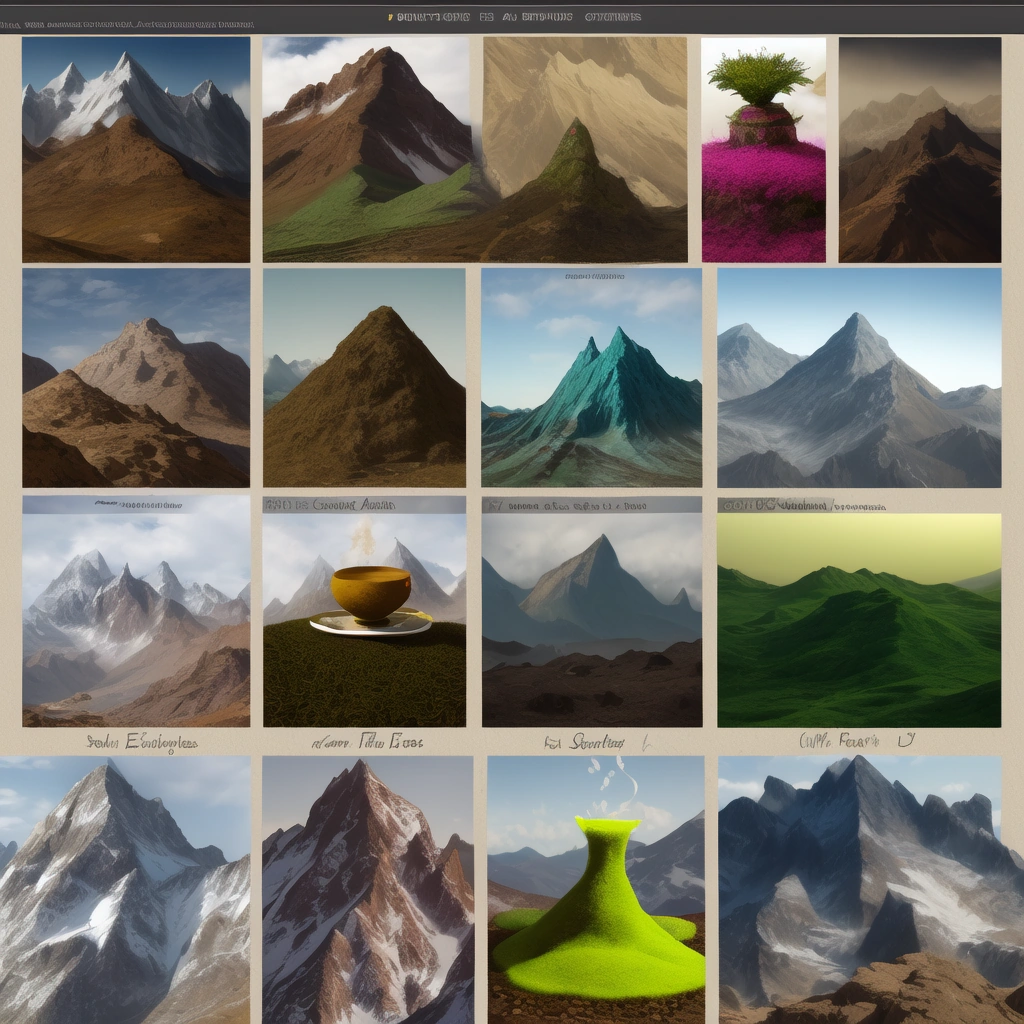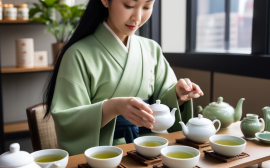Introduction: The Allure of Mountain Teas
From the mist-shrouded slopes of the Himalayas to the verdant peaks of Taiwan, a world of rare and exquisite teas awaits discovery. These high-altitude teas, cultivated in remote mountainous regions, possess unique flavor profiles shaped by the distinct terroir and meticulous cultivation practices. The thinner air, intense sunlight, and significant temperature variations at these elevations contribute to the development of complex flavor compounds, resulting in teas with nuanced and captivating characteristics. Join us as we explore the captivating world of mountain teas, uncovering their origins, processing methods, and the cultural traditions that surround them.
The pursuit of these exceptional teas often involves journeys to remote and breathtaking landscapes. Imagine traversing the winding roads of Darjeeling, India, where the famed First Flush Darjeeling is harvested in the shadow of the Himalayas. The cool mountain air, combined with the unique soil composition, imparts a delicate floral aroma and muscatel notes to this prized tea. Or picture yourself hiking through the misty mountains of Taiwan, where skilled tea masters cultivate High Mountain Oolong.
The high altitude and specific cultivars grown in this region result in a tea with a complex, layered flavor profile, often described as having notes of honey, orchid, and a hint of roasted chestnut. These journeys are not merely about the destination; they are about experiencing the culture and artistry that goes into each cup. The cultivation of mountain teas is often a labor of love, passed down through generations. In many regions, tea cultivation is deeply intertwined with the local culture and economy.
For example, in the Ilam district of Nepal, tea plantations provide livelihoods for many families, and the tea itself is an integral part of daily life. Similarly, in Yunnan province, China, ancient tea trees, some over a thousand years old, are revered for their unique flavor and cultural significance. These ancient trees, often growing wild in remote mountain forests, produce teas with a depth and complexity that are highly sought after by connoisseurs. The methods used to harvest and process these teas are often traditional, passed down through generations, ensuring the preservation of unique flavors and cultural heritage.
Beyond the unique flavors and origins, exploring mountain teas offers a sensory experience like no other. The visual appeal of the dry leaf, the aroma released as hot water is poured over it, and the nuanced flavors that unfold on the palate all contribute to a truly immersive experience. From the delicate floral notes of a white tea grown in the foothills of the Himalayas to the robust, earthy flavors of a dark tea from the mountains of Yunnan, the world of mountain teas offers a diverse and captivating journey for the senses.
Whether you are a seasoned tea aficionado or just beginning your exploration, discovering these rare and exquisite teas is a journey worth embarking on. By understanding the terroir, the cultivation practices, and the cultural significance of these teas, we can truly appreciate the artistry and dedication that goes into each cup. Moreover, the act of brewing and enjoying mountain tea can be a meditative ritual, a moment of quiet contemplation amidst the hustle and bustle of modern life. The process of preparing the tea, from heating the water to steeping the leaves, allows for a moment of mindfulness, a connection to the natural world and the rich cultural traditions that surround tea. Whether enjoyed alone or shared with friends and family, a cup of mountain tea offers a moment of tranquility and a taste of the extraordinary.
Factors Influencing Mountain Tea: A Symphony of Altitude, Climate, and Soil
Altitude, climate, and soil composition orchestrate a symphony of environmental factors that profoundly shape the character of mountain teas. The very air that caresses the leaves at high elevations, thinner and purer, plays a critical role. This reduced atmospheric pressure, combined with intense sunlight exposure, stimulates the tea plant to produce higher concentrations of flavor compounds, particularly amino acids and polyphenols. These compounds are the building blocks of the complex aromas and tastes that define rare tea varieties, transforming a simple beverage into an experience.
Imagine the brisk, clean air of the Himalayas imbuing Darjeeling First Flush with its signature light, floral aroma, a direct result of this high-altitude alchemy. The impact of climate extends beyond sunlight and air pressure. Significant temperature variations between day and night, a hallmark of mountain regions, further contribute to the development of nuanced flavors. These fluctuations stress the tea plants, prompting them to produce protective compounds that ultimately enhance the tea’s complexity. Consider the misty, cloud-covered slopes of Taiwan, where High Mountain Oolong thrives.
The constant moisture and dramatic temperature swings force the plants to develop a unique character, resulting in teas with creamy textures and captivating floral and fruity notes. This interplay between environmental stress and plant response is a key differentiator in the world of high-altitude tea. Soil composition is the final, crucial element in this terroir-driven equation. Mountainous regions often boast mineral-rich soils, a result of geological activity and erosion. These minerals, absorbed by the tea plants, impart distinct characteristics to the leaves, influencing everything from the tea’s color to its mouthfeel.
For example, the volcanic soils of certain tea regions in Yunnan, China, contribute to the earthy and robust qualities of Pu-erh tea. Similarly, the iron-rich soils of the Nilgiri mountains in India give Nilgiri tea its bright, brisk flavor. Understanding the soil’s composition is essential for appreciating the unique nuances of each tea origin. Tea cultivation practices in these regions are also intrinsically linked to the environment. Many mountain tea gardens employ traditional, sustainable methods that minimize environmental impact and promote biodiversity.
These practices, passed down through generations, recognize the delicate balance between the tea plants and their surroundings. From hand-picking the leaves to using natural fertilizers, these techniques contribute to the overall quality and character of the tea. This commitment to sustainable tea processing not only preserves the environment but also enhances the tea’s flavor profile, resulting in brews that are both nuanced and invigorating, a testament to the harmonious relationship between humans and nature. The increasing demand for ethically sourced tea further encourages these practices, ensuring the longevity of these exceptional tea regions.
Ultimately, the confluence of altitude, climate, and soil creates a unique terroir that defines the character of mountain teas. This terroir, combined with the skill and dedication of tea farmers, results in a diverse range of tea varieties, each with its own distinct flavor profile and cultural significance. Exploring these rare tea origins is not just a journey of taste but also a journey into the heart of mountain culture and tradition. Whether you are a seasoned tea connoisseur or a curious beginner, discovering the world of high-altitude tea offers a rewarding and enriching experience, connecting you to the land, the people, and the ancient art of tea cultivation. A proper tea brewing guide will help unlock the full potential of these exceptional teas, revealing their unique tea tasting notes and tea benefits.
Spotlight on Rare Mountain Tea Varieties: A Journey of Discovery
Embarking on a journey through the world of rare mountain teas is like scaling a peak of unparalleled flavors. These teas, nurtured by unique terroirs and often shrouded in mist, offer a glimpse into both nature’s artistry and the rich cultural traditions surrounding tea cultivation. From the famed slopes of Darjeeling to the lesser-known gems of Nepal, each tea presents a unique narrative waiting to be unfolded. Darjeeling First Flush, often referred to as the “Champagne of teas,” hails from the foothills of the Himalayas in India.
The cool mountain air and spring rains imbue this delicate tea with a light, floral aroma, often accompanied by distinctive muscatel notes. A true connoisseur’s delight, Darjeeling First Flush is best enjoyed on its own, allowing its nuanced flavors to take center stage. Moving eastward, the high mountain oolongs of Taiwan represent a spectrum of flavor profiles, from floral and fruity to roasted and woody. The steep slopes and misty conditions of Taiwan’s high-altitude tea gardens create a unique microclimate that contributes to the complex and layered character of these oolongs.
From the lightly oxidized Jade Oolong to the heavily roasted Da Hong Pao, Taiwanese oolongs offer a captivating exploration for any tea enthusiast. The journey continues to the hidden valleys of Nepal, home to the rare Nepalese Golden Tips. This exquisite tea, prized for its smooth, sweet liquor and delicate golden tips, reflects the pristine environment and meticulous hand-processing techniques employed in its production. A cup of Nepalese Golden Tips offers a moment of tranquility, transporting the drinker to the serene landscapes of the Himalayas.
Venturing further into the remote forests of Yunnan, China, we encounter the Wild Purple Tea, a true botanical marvel. This unique tea, characterized by its captivating purple hue and naturally sweet flavor, is a testament to the biodiversity of the region. Rich in antioxidants and boasting a unique flavor profile, Wild Purple Tea offers a taste of the untamed wilderness. These rare mountain teas not only tantalize the taste buds but also offer a connection to the people and cultures that cultivate them.
Traveling to these remote regions provides a unique opportunity to witness firsthand the artistry and dedication involved in tea production, from the careful plucking of leaves to the intricate processing methods passed down through generations. Exploring the origins of these teas adds a layer of appreciation for the final cup, transforming a simple beverage into a cultural experience. For the discerning tea drinker, exploring these rare mountain teas is more than just a sensory experience; it’s an immersion into a world of rich traditions, breathtaking landscapes, and the pursuit of exceptional flavor. Whether seeking a moment of quiet contemplation or embarking on a global tea adventure, these rare mountain teas offer a unique and unforgettable journey for the senses and the soul.
Cultural Significance: A Tapestry of Traditions
Tea cultivation and consumption are deeply intertwined with the cultural fabric of many mountain communities. From elaborate tea ceremonies in Japan to the daily ritual of sharing tea in the Himalayas, these traditions reflect the reverence and appreciation for this ancient beverage. The act of preparing and sharing tea transcends mere sustenance; it’s a social lubricant, a spiritual practice, and a tangible link to history. In Japan, the Cha no Yu, or the Way of Tea, exemplifies this profound connection.
More than just a method of brewing matcha, it’s a meticulously choreographed ritual emphasizing harmony, respect, purity, and tranquility. The tea room itself, often a rustic structure nestled in a garden, is designed to foster a sense of detachment from the everyday world, inviting participants to fully engage with the present moment. The precise movements of the host, the carefully chosen utensils, and the shared experience of sipping the vibrant green tea create a meditative atmosphere, reinforcing social bonds and honoring centuries of tradition.
This focus on mindfulness and shared experience elevates tea consumption to an art form, deeply embedded in Japanese identity. Conversely, in the high-altitude regions of the Himalayas, particularly in areas like Nepal and Tibet, tea is often consumed with yak butter and salt, a practice born out of necessity and adapted to the harsh climate. This hearty concoction, known as Po Cha, provides essential calories and warmth, serving as a staple food and drink. The communal preparation and sharing of Po Cha around a yak-dung fire strengthens family ties and reinforces a sense of community in these remote and often isolated regions.
The tea itself, typically a brick tea sourced from lower altitudes, undergoes a unique processing method involving fermentation and aging, resulting in a robust flavor profile that complements the rich butter and salt. This practical and social function of tea highlights its adaptability and importance in different mountain cultures. Beyond these specific examples, tea plays a significant role in the economies of many mountain regions. In areas like Darjeeling and Nilgiri in India, tea cultivation provides livelihoods for thousands of people, shaping the social structure and landscape.
The tea estates themselves often become centers of community life, providing housing, education, and healthcare for workers and their families. The annual tea harvests are celebrated with festivals and rituals, further solidifying the cultural significance of tea. The unique terroir of these regions, combined with traditional tea processing methods, contributes to the distinctive character of these rare tea varieties, making them highly sought after by tea connoisseurs worldwide. This economic and social impact underscores the importance of sustainable tea cultivation practices to protect both the environment and the livelihoods of these mountain communities.
Furthermore, the growing popularity of high-altitude tea tourism offers a unique opportunity to experience these cultures firsthand. Travelers can visit tea estates, participate in tea tasting sessions, and learn about the intricate process of tea cultivation and processing. Some estates offer immersive experiences, allowing visitors to stay on the property and participate in daily activities, from plucking tea leaves to learning the art of tea brewing. This form of cultural exchange not only promotes a deeper understanding of tea origins but also supports the local economies and helps preserve these unique traditions. As travelers seek authentic and meaningful experiences, mountain tea regions offer a compelling blend of natural beauty, cultural richness, and the opportunity to connect with the people who cultivate these exceptional tea varieties.
Conclusion: A Call to Sustainability and Exploration
As we savor the exquisite flavors of mountain teas, it’s essential to consider the importance of sustainable cultivation practices. These rare teas, nurtured on high slopes, represent a delicate balance between nature and human intervention. Supporting ethical sourcing ensures the preservation of these unique tea varieties and empowers the communities that cultivate them. By choosing sustainably produced teas, we contribute to the long-term health of the environment and the well-being of tea-growing regions, safeguarding both biodiversity and cultural heritage.
For instance, purchasing directly from cooperatives in Darjeeling or the Nilgiri hills in India can empower local farmers and ensure fair wages, directly impacting their livelihoods and preserving traditional tea-making practices. The pursuit of rare mountain teas can also become a journey of cultural discovery. Traveling to remote tea regions offers a unique opportunity to witness firsthand the artistry and dedication involved in tea cultivation. Imagine trekking through the misty mountains of Taiwan, learning about the meticulous process of crafting High Mountain Oolong from the tea masters themselves.
Such experiences not only deepen our appreciation for the tea but also foster cross-cultural understanding and support local economies through sustainable tourism. Moreover, seeking out authentic tea experiences, like participating in a traditional Japanese tea ceremony or visiting a tea plantation in Nepal, enhances our understanding of the cultural significance of tea in different societies. Sustainable tea cultivation encompasses a range of practices, from organic farming and biodiversity conservation to water management and fair labor practices.
The delicate ecosystems of mountain regions are particularly vulnerable to environmental changes, making sustainable practices crucial for long-term viability. Look for certifications like Fair Trade, Rainforest Alliance, and organic labels, which indicate a commitment to environmental and social responsibility. Furthermore, supporting tea producers who prioritize biodiversity conservation helps protect the surrounding flora and fauna, contributing to the overall health of the ecosystem. By making informed choices, we can savor our cup of rare mountain tea knowing that it contributes to a more sustainable and equitable future.
Beyond the environmental benefits, sustainable tea cultivation has a direct impact on the quality and flavor of the tea itself. Tea plants grown in healthy, balanced ecosystems produce leaves with more complex and nuanced flavor profiles. For example, the mineral-rich volcanic soils of Taiwan’s high mountains contribute to the unique character of its oolongs, imparting distinct mineral notes and a smooth, lingering finish. Similarly, the pristine environment of the Himalayas allows Darjeeling teas to develop their characteristic muscatel notes and delicate floral aromas.
Choosing sustainably produced teas not only benefits the environment and the communities involved but also enhances our sensory experience, allowing us to fully appreciate the exquisite flavors of these rare mountain treasures. Ultimately, exploring the world of rare mountain teas is an invitation to embark on a journey of discovery, one that intertwines flavor, culture, and sustainability. By supporting ethical sourcing and sustainable practices, we become active participants in preserving these unique tea varieties and the rich traditions surrounding them. Whether it’s a delicate Darjeeling First Flush or a robust Yunnan black tea, each cup tells a story of the land, the people, and the meticulous craftsmanship that brings these rare treasures to our tables. As we deepen our appreciation for these exceptional teas, we also contribute to a more sustainable and flavorful future for generations to come.



